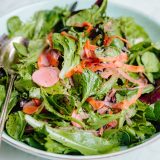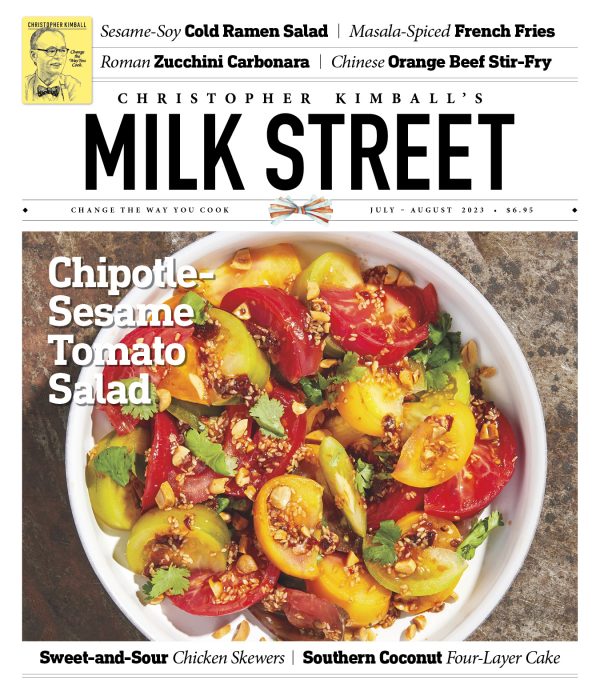The casual tourist might mistake Portland, Maine, for a typical cruise ship destination. Step into a restaurant or bakery, however, and you realize that the Portland of Commercial Street, the main by-the-harbor drag, is a separate world.
It’s a world powered by fresh seafood, a small-scale farming industry and cheap real estate. Places such as Eventide Oyster Co., which started as an oyster bar, are thriving. Its success lies in its varied menu: from tuna crudo and ceviche to a Korean fried chicken sandwich and whoopie pies.
I visited Eventide for their signature dish, a green salad with a nori vinaigrette and pickled vegetables. It takes you by surprise. As he demonstrates the recipe, Mike Wiley, Eventide’s co-owner, has a friendly yet taut face. The kitchen is a long galley affair, and efficiency is the password.
He begins with the pickling liquid—rice vinegar and sugar—which is used for sliced onion and spiralized daikon and carrot. Next up is nori seaweed, which is toasted. Wiley blitzes the brittle nori in a blender to create a fine powder. To that, he adds mirin, soy sauce, canola oil and rice vinegar, all of it quickly processed to make the dressing.
When dressing salads, Wiley starts with a small amount of dressing. He says to begin with half as much as you think you’ll need, toss thoroughly, and only then add more. Use a huge bowl to make tossing easier.
Thin sheets of dried seaweed known as nori begin as edible red algae. It is washed, strained, shredded, pressed, and dried into brittle, paper-thin sheets.
With its briny flavor and umami notes, nori is best known as a wrapper for makimono (rolled sushi). It’s also used to season both savory and sweet dishes.
Korean-style seasoned nori, which is thinner and crispier than sushi nori, is flavored with salt and oil. It often is sold as a snack to be eaten as one would a chip.
In Asia, nori snack sheets usually are wrapped around cooked rice. We use them to add briny-savory notes to our salad dressing. We also cut the sheets into threads to garnish noodle dishes and deviled eggs. And we mix small bits into ground meat for extra-savory meatballs.
Back at Milk Street, we substituted more common red radishes for daikon, then pickled them—along with sliced onion and carrot strips—in hot rice vinegar, sugar and water. For the dressing, we used a spice grinder to pulverize seaweed snacks (they are already toasted), then mixed in soy sauce, mirin, oil and rice vinegar, slightly thickening the dressing.
To serve, we tossed spring greens with half the pickles; the other half we mounded on top. The simple secret of this salad is the combination of the umami base combined with the bright, crisp bite of pickled vegetables. Simple never tasted so good.
Related Recipes
May-June 2019

Sign up to receive texts
Successfully signed up to receive texts!
We'll only send our very best offers - Like a $15 store credit to start.
By entering your phone number and submitting this form, you consent to receive marketing text messages (such as promotion codes and cart reminders) from Christopher Kimball's Milk Street at the number provided, including messages sent by autodialer. Consent is not a condition of any purchase. Message and data rates may apply. Message frequency varies. You can unsubscribe at any time by replying STOP or clicking the unsubscribe link (where available) in one of our messages. View our Privacy Policy and Terms of Service.



